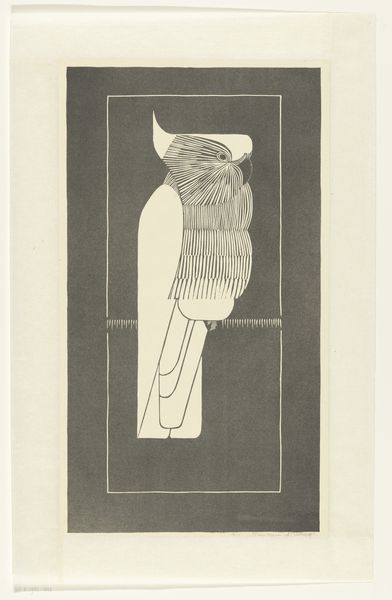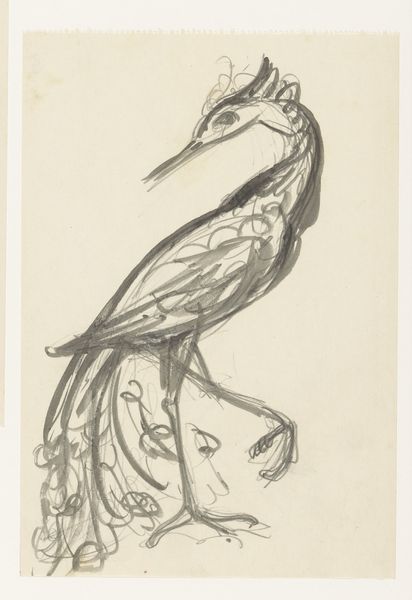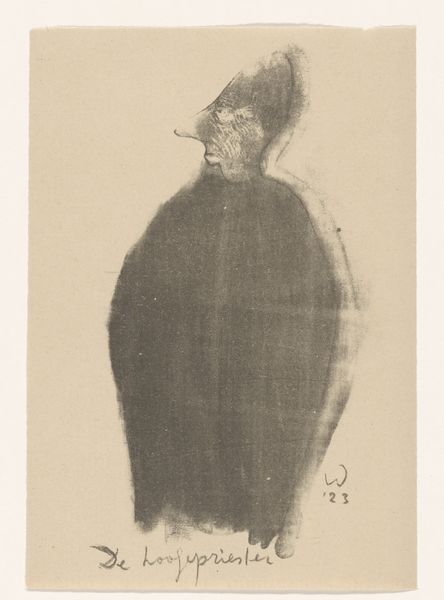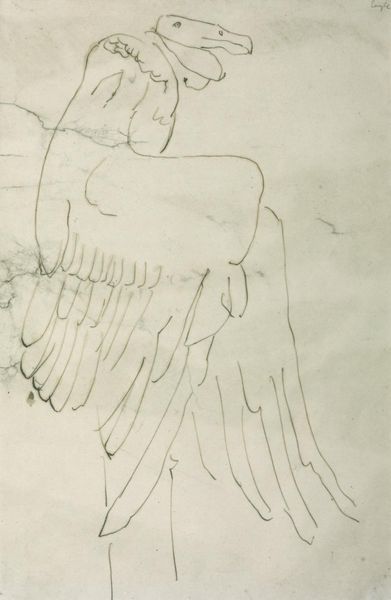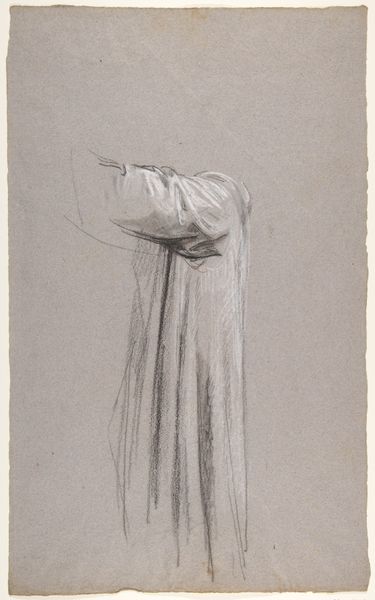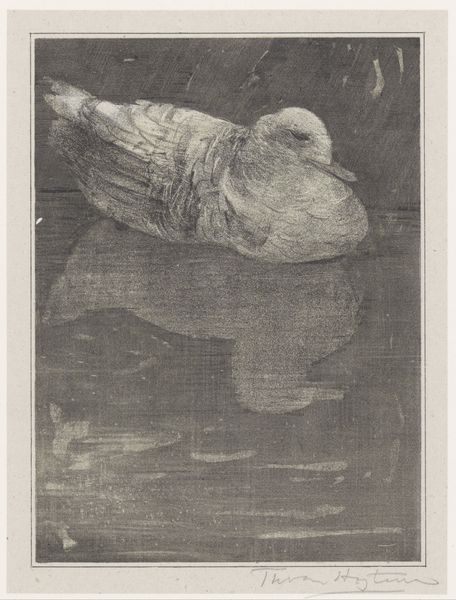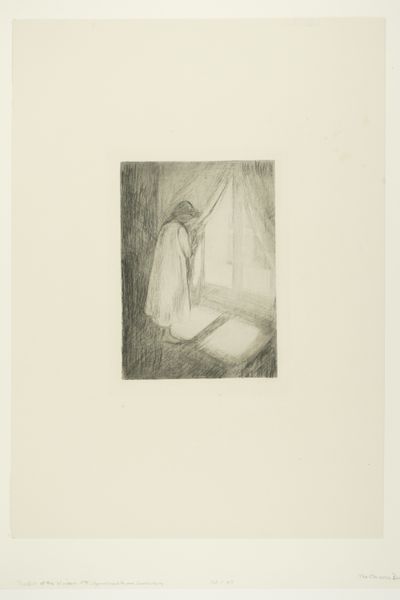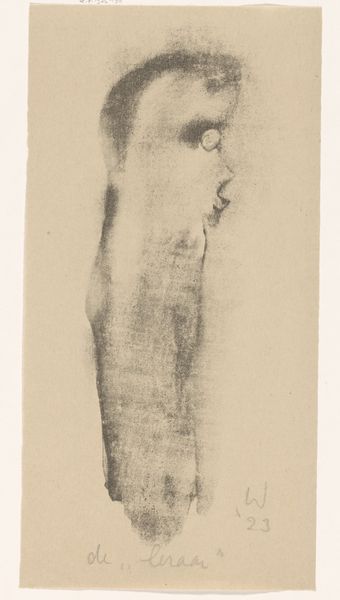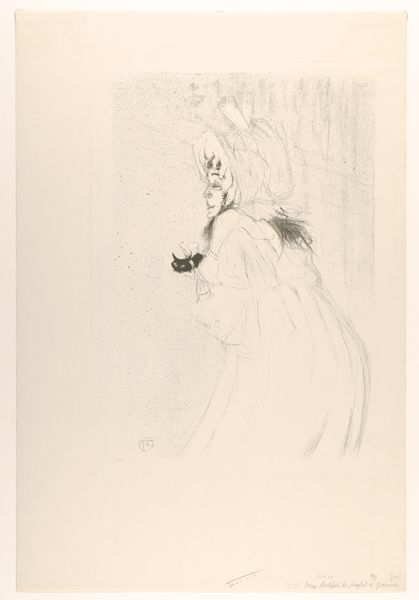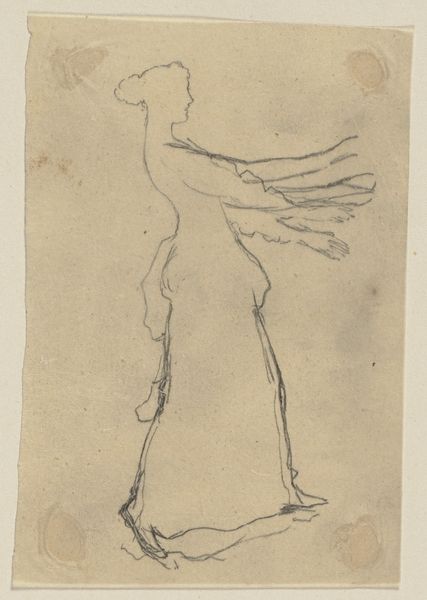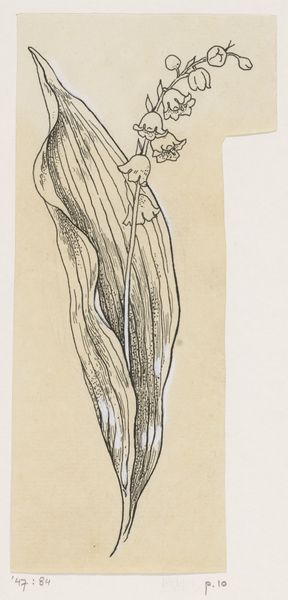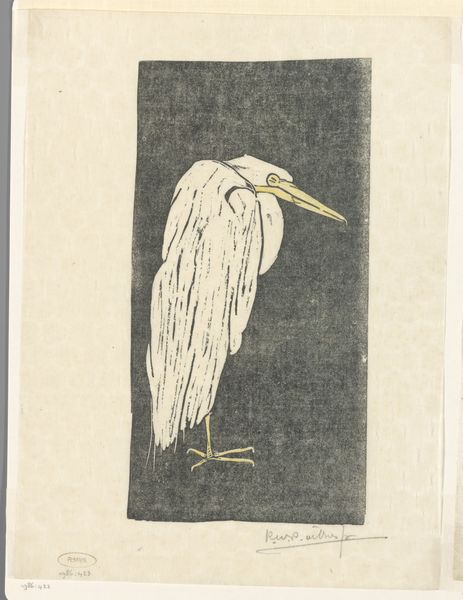
drawing, paper, graphite
#
drawing
#
landscape
#
figuration
#
paper
#
graphite
#
realism
Dimensions: height 293 mm, width 182 mm
Copyright: Rijks Museum: Open Domain
Curator: This is "Grote zilverreiger," or "Great Egret," a graphite drawing on paper by Reinier Willem Petrus de Vries, likely created between 1884 and 1952. Editor: It's striking how minimalist it is. Just a few lines capturing the essence of this bird. There's a certain tranquility in its simplicity. Curator: Precisely. The economy of line is remarkable. Note how De Vries uses graphite to suggest volume and texture, focusing on the interplay between light and shadow to define form. The stark white of the egret against the gray paper generates contrast. Editor: It makes me think about the paper itself—a grey stock. It wasn't a pristine canvas; its visible fibers and texture are integral. I wonder if the artist chose that particular stock consciously? Maybe to echo the rough texture of natural reeds within a landscape. What statement could de Vries have been attempting to produce given that this work of art lacks vibrant colors? Curator: Interesting point! We should remember that this choice offers both technical constraints and formal opportunities. The graphite accentuates certain intrinsic qualities of the work’s texture, grain, and layering—all while emphasizing structure. There is, in other words, no background! Editor: You're right. The bareness contributes a raw quality that resonates in my mind—like field studies produced while bird watching. I consider what this work might tell us about ecological understanding or bird habitats during De Vries' life. The work reminds me of environmental labor, of how human labor contributes to land cultivation. Curator: A fitting, although different consideration, as it underlines the multiplicity of perspectives, so vital to truly interpreting this seemingly unassuming but remarkably composed image. The essence is embedded in this simplicity of form, as we now see it through different interpretive frameworks. Editor: Ultimately, I find it beautiful because of its lack of adornment. De Vries invites the viewer to engage with something fundamental.
Comments
No comments
Be the first to comment and join the conversation on the ultimate creative platform.

